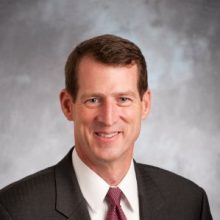Making Sense of Federal IT’s Move to the Cloud and Software-Defined Networking
The federal government is being roiled by many of the technology trends that are affecting the commercial market, including the adoption of cloud services and the move to flexible, software-defined networks. By pushing to consolidate and optimize data centers, and by making it easier for cloud service providers to get certified by the Federal Risk and Authorization Management Program, the government is now more than ever encouraging agencies to move to the cloud.
How will these shifts affect federal IT leaders and those working under them? And how does the experience of the U.S. government compare to that of foreign governments that are dealing with the same technology trends?
Recently, FedTech spoke with Tim Solms, Juniper Networks’ vice president of U.S. federal and managing director of worldwide government, to discuss how the adoption of cloud services and transformation of networks is affecting federal IT.
FEDTECH: What is the top trend you see right now in federal IT?
SOLMS: The Defense Department has essentially spent the last 13 years focused on the warfighter, and rightfully so. The question now is how quickly can we transform after this period.
 Government is trying to get their head around how to do this, incorporating the latest advances in technology with tight fiscal resources. It’s not a situation where experience will help, but a creative problem.
Government is trying to get their head around how to do this, incorporating the latest advances in technology with tight fiscal resources. It’s not a situation where experience will help, but a creative problem.
We’re asking the federal government to do things that are inherently unnatural in terms of IT. Look at the cloud. Cloud computing is big and provides that core IT functionality. We’ve got about a 36-month window for programs to be moved to the cloud or to identify those that will move. There is plenty of incentive, whether in areas of compute, storage or other IT capability.
What fascinates me is what is beyond that. There will be cloud consumption curves that occur on-premises and in commercial cloud. When we get beyond how that works, we can bring in Big Data, machine learning, Internet of Things and others. We can empower the customer in new ways. There will be a tipping point of when government really sees all the advantages.
FEDTECH: In your new role with Juniper, you focus on worldwide public sector. How does the United States compare with other governments? Is it behind? Ahead?
SOLMS: Terry Halvorsen, the CIO at the Defense Department, speaks regularly with technology leaders from the other Five Eyes nations [Australia, Canada, New Zealand and the United Kingdom] and they face many of the same challenges. They are trying to tackle some of the same cloud concerns or migrate to next-generation computing models. We’re all on the same path. That tells me we are doing the right things as we’re all working toward the same goal.
FEDTECH: What networking technologies are you finding agencies most need?
SOLMS: It’s very much a want for services and software, with hardware on the back end. We’re not talking about speeds and feeds, but a horizontal approach to networking where we are looking for speed. We want speed that gives capability and speeds next-generation access.
FEDTECH: It seems agencies want to look more at security architectures instead of just plugging in best-of-breed technologies. Are you seeing that?
SOLMS: Solms: Yes. It really does tie into this well to everything else that is happening. We’re seeing a quantum leap forward. Over the last 20 years, a number of technologies have come in and been disruptive with the exception of networking. We see software-defined networking as being that disruptive technology. It’s a creative solution that provides real results.









